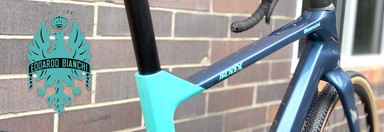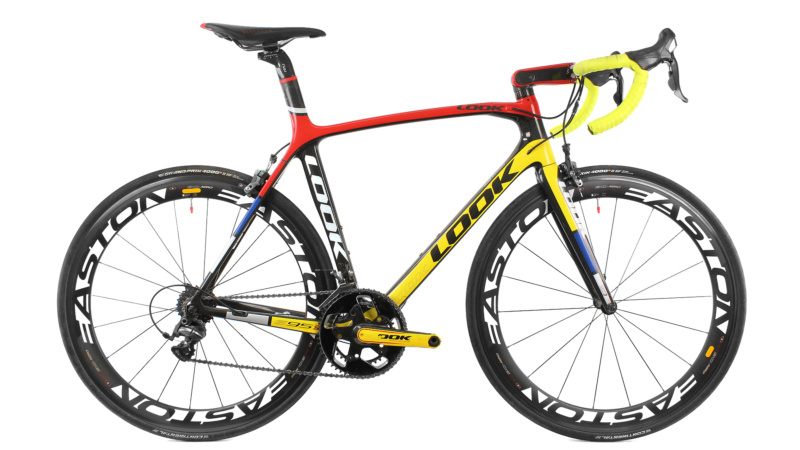In a world where individuality thrives and personal style knows no bounds, why settle for a run-of-the-mill bike when you can transform it into a true masterpiece?
Enter the captivating realm of custom paint, where your imagination takes the wheel and the canvas becomes your trusty steed. Custom paint allows you to break free from conformity and unleash your creativity, turning your beloved bike into a work of art that is uniquely yours.
From sleek and sophisticated designs to vibrant bursts of color, the possibilities are as limitless as your imagination.
But wanting a custom-painted bike means you need to do some work. If you’re looking for a simple solution, here’s a complete suggestion from our team of experts.
Custom Paint a Bike: Things to consider
When considering custom painting your bike, there are a few key factors to keep in mind.

First, think about your desired design or theme. Do you want something bold and eye-catching, or a more subtle and sophisticated look? Consider your personal style and preferences, as well as any inspiration or references you may have.
Next, consider the type of paint and finish you want. Different paint types, such as enamel or powder coat, offer varying levels of durability and aesthetics. Additionally, choose a finish that suits your desired look, whether it’s glossy, matte, metallic, or a custom texture.
It’s also crucial to select a reputable and experienced painter or bike shop that specializes in custom paint jobs. Look for professionals with a portfolio of previous work and positive reviews.
Lastly, budget and time frame are essential considerations. Custom painting can vary in cost depending on the complexity of the design and the quality of materials used. Ensure you have a realistic budget and communicate your desired timeline with the painter to manage expectations.
By carefully considering these factors, you can make informed decisions and ensure a satisfying and personalized custom paint job for your bike.
How to custom paint a Bike: Step-by-Step Procedure
With some planning, preparation, and patience, you can transform your bike into a unique work of art that reflects your personality and style. Here’s a step-by-step guide to help you embark on this creative journey.

Step 1: Planning takes the most priority
Design and Inspiration Before diving into the painting process is crucial. Take time to conceptualize your design.
Consider your preferences, desired theme, and any specific elements you want to incorporate. Browse through inspiration sources such as magazines, online galleries, or even nature.
Sketch or digitally create a rough design to visualize the concept and make adjustments as needed.
Step 2: Gathering all your important stuff
Gather Materials and Prepare Workspace to ensure a successful custom paint job. You can hire a painting shop nearby to bring your ideas to life. That’s a good choice.
Acquire high-quality paints suitable for your bike frame material, such as enamel or automotive-grade paints.
Also, you need to gather other tools including sandpaper, primer, clear coat, masking tape, and painting supplies.
Set up a well-ventilated area with ample space for painting, preferably free from dust and debris. This is important when you’re going DIY.
Step 3: Disassemble your bike
To achieve a flawless paint finish, prepare the bike by disassembling its components.
Remove the wheels, handlebars, saddle, and other removable parts. Thoroughly clean the frame with a degreaser to eliminate dirt, grease, and old paint.
Take care not to damage any non-removable parts or components.
Step 4: Sanding and Primer Application
Create a suitable surface for paint adhesion by lightly sanding the bike frame with a fine-grit sandpaper. This helps remove imperfections and creates a slightly rough texture.

After sanding, apply a primer specifically designed for your chosen paint type. The primer promotes better paint adherence and provides a smooth base for your custom design.
Step 5: Painting Technique and Layers
Now comes the exciting part—applying paint to your bike frame. Choose your preferred painting technique, such as spraying, brushing, or airbrushing, based on your skill level and desired outcome.
Start with a base color coat and apply multiple layers, allowing each coat to dry completely before adding the next. Building up layers ensures depth and richness in the final finish.
Step 6: Design and Detailing
To add complexity and visual interest to your bike, incorporate design elements and detailing. Use masking tape, stencils, or freehand techniques to create patterns, shapes, or intricate designs.
Take your time, ensuring clean lines and smooth transitions between colors and sections. Don’t be afraid to experiment and let your creativity shine.
Step 7: Seal and Protect
Once your paintwork is complete and has dried thoroughly, it’s crucial to protect and seal the surface.
Apply a clear coat specifically formulated for your paint type to safeguard the design and enhance its longevity. Follow the manufacturer’s instructions regarding drying and curing times for optimal results.
Step 8: Reassembly and Finishing Touches
After the paint and clear coat have cured completely, reassemble the bike by carefully attaching the previously removed components.

Ensure that everything fits securely and functions properly. Take this opportunity to clean and polish other bike parts, such as the wheels and handlebars, to complement the newly painted frame.
Step 9: Show Off Your Masterpiece
With the reassembly complete, step back and admire your one-of-a-kind custom-painted bike. Take it for a test ride, reveling in the joy of riding a uniquely personalized machine. Showcase your masterpiece to friends, fellow cyclists, and the world, knowing that your bike is a reflection of your creativity and passion.
FAQ
#1. Is it easy to paint a bike?
Ans: Painting a bike can be a moderately challenging task that requires careful preparation, attention to detail, and some basic painting skills. With proper planning, patience, and the right materials, it is achievable for those willing to invest time and effort into the process.
#2. What paint is used on bikes?
Ans: Bikes are typically painted using specialized paints designed for outdoor applications, such as enamel or automotive-grade paints. These paints offer durability, weather resistance, and vibrant color options suitable for bike frames.
Conclusion
Custom painting a bike is an art form that allows you to express your individuality and create a ride that is truly your own.
By following these step-by-step instructions and infusing your own creative flair, you can transform a standard bike into a captivating work of art that turns heads and sparks conversations.
Embrace the journey, let your imagination run wild, and enjoy the process of customizing your ride.




